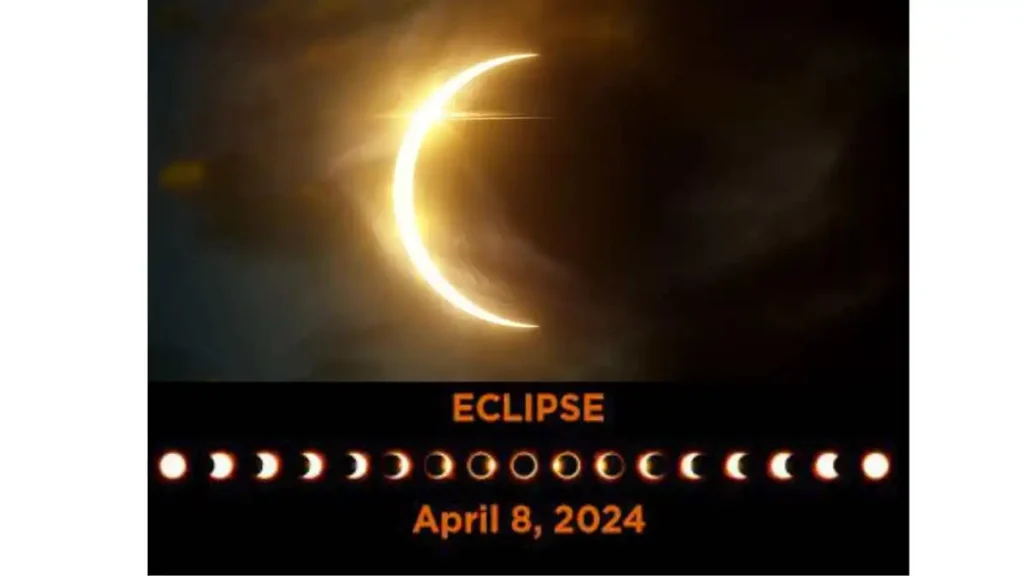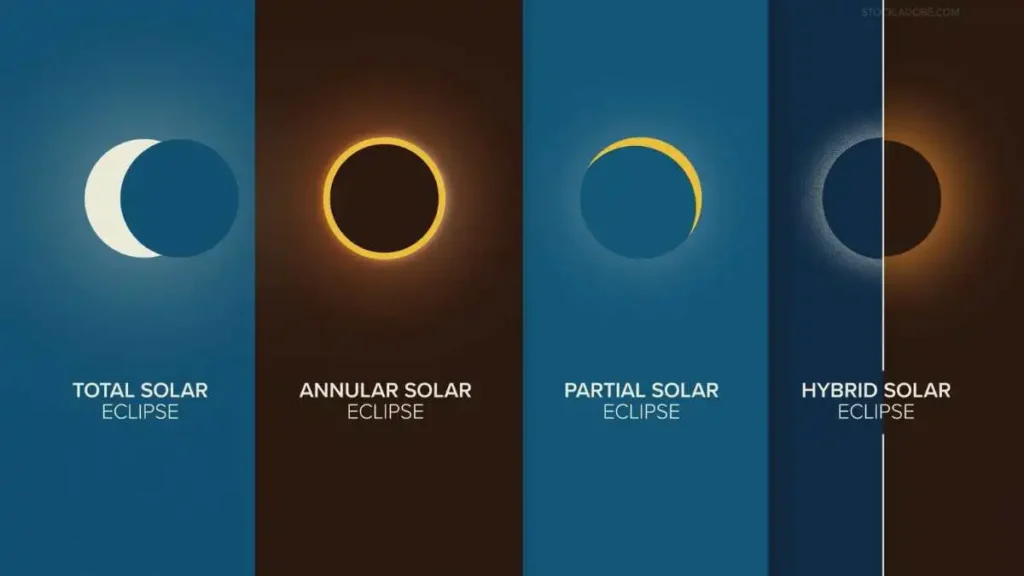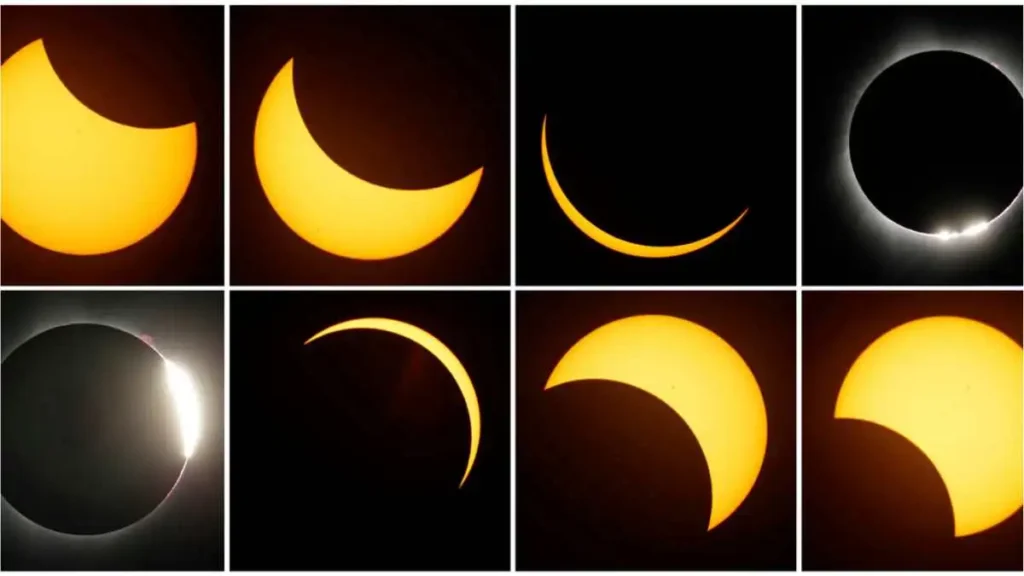Have you ever dreamt of the 2024 Total Solar Eclipse witnessing the sun vanish in the middle of the day? Imagine a world plunged into an ethereal twilight, the stars twinkling in the daytime sky. This isn’t science fiction; it’s the incredible phenomenon of a total solar eclipse. On April 8th, 2024, North America will be treated to this celestial spectacle, and this comprehensive guide will equip you with everything you need to know!
Unveiling the Science Behind a Total Solar Eclipse
Our solar system operates on a delicate balance. The sun, with its immense gravitational pull, influences the moon’s orbit around Earth. Occasionally, a perfect alignment occurs where the moon casts a precise shadow on Earth’s surface. This narrow path, known as the path of totality, is where the total eclipse can be witnessed.

During this magical moment, the moon completely blocks the sun’s blinding light, revealing the sun’s corona, a wispy, white halo surrounding our star. Normally obscured by the sun’s radiance, the corona provides a view into the sun’s outer atmosphere, making a total eclipse a truly unique astronomical event.
This awe-inspiring celestial ballet has captivated humanity for centuries. Ancient civilizations documented eclipses, often attributing them to mythical creatures or divine intervention. Today, with advancements in science and technology, we understand the mechanics of this phenomenon. However, the wonder and excitement it evokes remain unchanged.
Types of Solar Eclipses:
Solar eclipses, captivating celestial events, occur when the moon passes between the sun and the Earth, casting shadows on our planet. There are four main types of solar eclipses: total, partial, annular, and hybrid. Each type offers a unique spectacle, ranging from the breathtaking darkness of totality to the mesmerizing “ring of fire” of an annular eclipse. Let’s delve into each type to understand its distinct characteristics and allure.

Total Solar Eclipse:
When the moon completely covers the sun, blocking its light entirely, it creates a total solar eclipse. This results in a temporary darkness known as totality.
Partial Solar Eclipse:
In a partial solar eclipse, the moon partially covers the sun, casting a shadow on a portion of the Earth’s surface. This creates a crescent shape of sunlight.
Annular Solar Eclipse:
An annular solar eclipse occurs when the moon is farthest from Earth, appearing smaller and not entirely covering the sun. This creates a ring of sunlight known as the “ring of fire” around the moon.
Hybrid Solar Eclipse:
Also known as an annular-total eclipse, a hybrid solar eclipse transitions between a total and annular eclipse along its path. This occurs due to variations in the Earth-Moon distance and observer location.
The Path of 2024 Total Solar Eclipse
The 2024 total solar eclipse will carve a path across North America, leaving a trail of awe-struck viewers in its wake. This path, which varies in width, determines where viewers can experience the complete darkness and the breathtaking display of the corona.
Here’s a breakdown of the path of totality for the 2024 eclipse
- Mexico: The journey begins in parts of Sinaloa and Durango, Mexico.
- United States: The eclipse will then traverse across portions of 15 U.S. states, including Texas, Oklahoma, Missouri, Arkansas, Illinois, Kentucky, Tennessee, Georgia, North Carolina, South Carolina, Virginia, Maryland, Pennsylvania, New York, and Vermont.
- Canada: The path will conclude in parts of New Brunswick and Nova Scotia, Canada.

Not in the path of totality? Don’t worry! A partial eclipse will still be visible across most of North America. While you won’t experience complete darkness, the partial eclipse can still be a captivating sight.
Resources to determine if you’re in the path of totality
Witnessing Safely: Essential Tips for Viewing the 2024 Eclipse
While experiencing a total solar eclipse is a once-in-a-lifetime opportunity, safety is paramount. Looking directly at the sun, even during a partial eclipse, can cause permanent eye damage. Here are some crucial tips to ensure a safe and enjoyable experience:
- Never look directly at the sun with your naked eyes. This applies throughout the entire eclipse, even during the partial phases.
- Invest in certified eclipse glasses: These specially designed glasses have filters that block harmful solar radiation. Look for glasses that meet the ISO 12312-2 international standard.
- Inspect your eclipse glasses before use: Ensure they are not scratched, damaged, or have any loose parts. Discard any compromised glasses.
- Supervise children: Adults should closely monitor children using eclipse glasses to ensure they don’t peek around or remove them.
- Alternative Viewing Methods: If you can’t acquire eclipse glasses, there are safer ways to witness the eclipse indirectly. Projectors with solar filters or pinhole projectors can provide safe ways to observe the eclipse’s progress.
- Embrace the Community Experience: Many organizations and astronomy clubs host eclipse viewing events with proper equipment and guidance. Consider participating in such gatherings for a safe and informative experience.
Beyond the Darkness: Exploring the Wonders of a Total Solar Eclipse
The total solar eclipse is just the beginning of a magnificent celestial display. Here are some additional phenomena you might witness during this event:
- Diamond ring effect: As the sun emerges from behind the moon, a bright point of sunlight can appear, resembling a diamond ring.
- Solar prominences: These are fiery red loops of gas that erupt from the sun’s surface and are sometimes visible during a total eclipse.
- Sudden temperature drop: As the sun’s light is blocked, a brief temperature drop can occur.
- Animal behavior: Animals may become confused by the sudden shift in light, exhibiting unusual behavior
As we conclude our journey into darkness, we are reminded of the profound beauty and wonder of the cosmos. The 2024 total solar eclipse serves as a reminder of our place in the universe and the interconnectedness of all things. So, mark your calendars, gather your eclipse glasses, and prepare to witness nature’s breathtaking spectacle unfold before your eyes. The moon takes a bite out of the sun, and we are all witnesses to the magic of the universe.